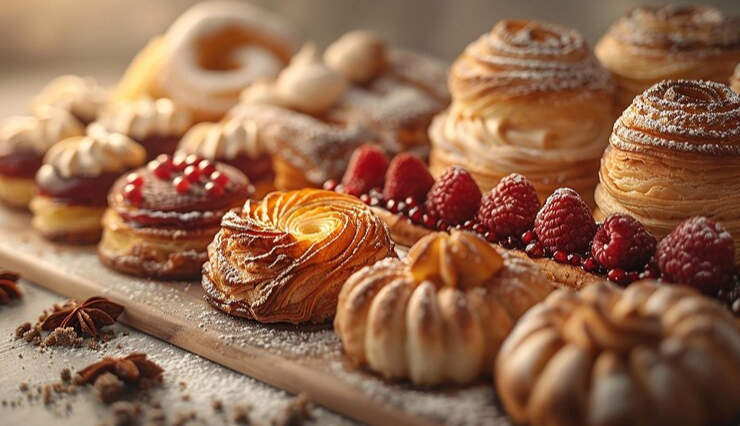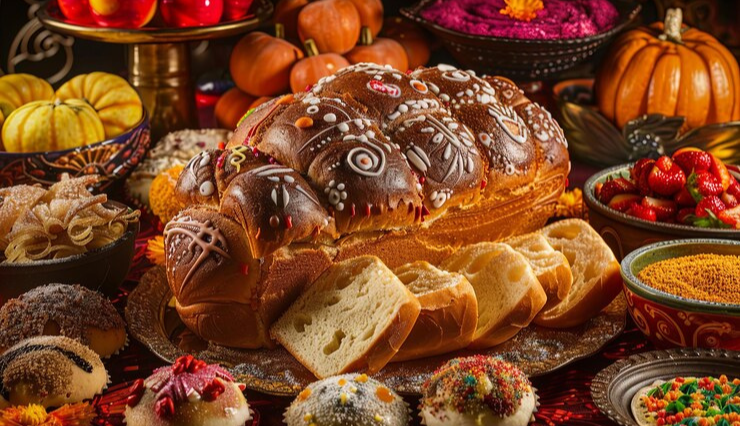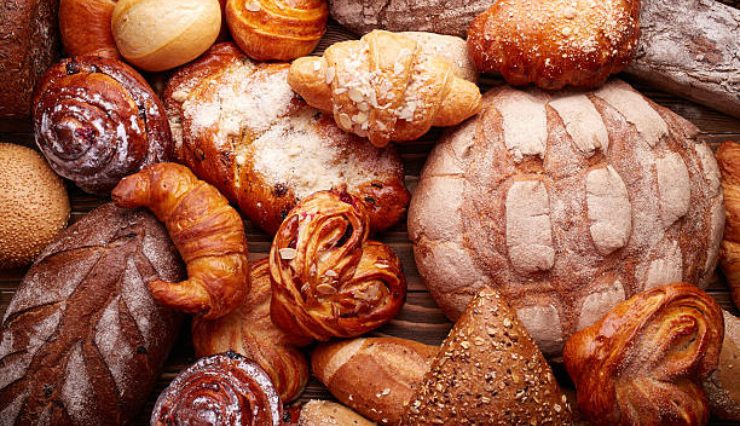Pastries have always fascinated culinary enthusiasts with their intricate designs, delicate textures, and rich flavors. Becoming master in the art of pastry is a process that demands patience, accuracy, and dedication. Throughout the globe, famous bakeries and well-known pastry chefs are constantly expanding the limits of what is possible with flour, sugar, and butter. This blog examines the realm of pastry art, delving into its history, methods, and the creative individuals responsible for iconic creations.
The Historical Evolution of the Art of Pastry
Early Beginnings: The origin of the art of pastry can be traced back to ancient civilizations. The Egyptians were the first to make pastries with simple dough, and the Greeks and Romans improved upon this by making sweet and savory pies. During the Middle Ages in Europe, puff pastry and shortcrust were created, setting the base for numerous pastries that are still popular today.
Key Developments: The era of the Renaissance brought about a notable advancement in the field of pastry making. The pastry cooks at Catherine de’ Medici’s French court were famous for their intricate desserts, which led to pastry being recognized as a prestigious culinary form. In the 19th century, innovations like the creation of the rolling pin and the adoption of refrigeration transformed the art of making pastries.
Cultural Impact: Pastries have been essential in cultural festivities and customs around the globe. Each culture has brought its own distinctive techniques and flavors to the pastry world, adding to its diversity and popularity, from French croissants to Italian cannoli.

Iconic Bakeries and their Legacy
Legendary Establishments: Well-known bakeries such as Ladurée in Paris, Dominique Ansel Bakery in New York, and Pasticceria Marchesi in Milan are closely associated with exceptional pastry-making skills. These businesses are well-known for their dedication to excellence and creativity.
Signature Creations: Famous bakeries typically offer special pastries that represent their tradition. Ladurée is well-known for its macarons, which are delicate almond meringue cookies filled with ganache. Dominique Ansel is recognized for inventing the Cronut, a popular croissant-doughnut combination that became a global sensation. Pasticceria Marchesi is famous for its classic Italian pastries, like panettone and cannoli.
Culinary Pioneers: Pastry artists such as Pierre Hermé, dubbed the “Picasso of Pastry,” and Dominique Ansel have had a major impact on the world of pastry. Their innovative ideas and skilled expertise continue to motivate pastry chefs globally.

Techniques and Skills in the Art of Pastry
Foundational Techniques: The key to mastering the art of pastry starts with mastering basic techniques. This involves making an ideal dough, comprehending the chemistry of raising agents, and attaining the correct mixture of tastes. Skills like using lamination for croissant dough and tempering chocolate for delicate treats are crucial for anyone aiming to be a pastry chef.
Innovative Methods: Top pastry chefs are always seeking new ways to push the limits of pastry art through innovative techniques. Molecular gastronomy incorporates scientific principles into pastry-making, enabling chefs to achieve textures and flavors that were once considered unattainable. Modern techniques such as spherification and edible foams give a contemporary touch to traditional pastries.
Precision and Patience: Mastery of art of pastry requires great precision and patience. Precision in measurements is crucial, and methods must be carried out with great attention to detail. Paying close attention to detail is what sets apart a good pastry from an exceptional one. Pastry chefs frequently dedicate many years honing their skills, constantly improving to perfect their craft.

Training and Education in the Art of Pastry
Prestigious Pastry School: Prominent pastry institutions like Le Cordon Bleu in Paris and The Culinary Institute of America are essential in preparing aspiring pastry chefs for their careers. These schools provide thorough training programs that encompass basic skills and advanced pastry arts, equipping students with the necessary skills to succeed in the industry.
Mentorship and Learning: Mentorship and apprenticeships are essential for becoming proficient in the art of pastry . Numerous accomplished pastry chefs credit their development to learning from experienced mentors who pass on their knowledge and skills. This practical learning opportunity is crucial for building the necessary skills and self-assurance to make outstanding pastries.
Professional Development: Ongoing education and career growth are crucial for achieving success in the field of pastry making. Pastry chefs often participate in workshops, conferences, and culinary competitions to remain current on the latest trends and techniques. This dedication to education guarantees that they stay ahead in the field.
Creative Innovation and Trends
Fusion Pastries: Fusion pastries, incorporating flavors and techniques from various culinary traditions, are gaining more popularity. Some instances are matcha-infused croissants and miso caramel eclairs. These innovative mixes provide a new twist on traditional baked goods, attracting bold tastes.
Artistic Presentation: The artistic display holds great importance in the art of pastry. Pastry chefs use their imagination to create visually appealing desserts that catch the eye and please the palate. Methods such as detailed piping, edible flowers, and hand-painted designs enhance pastries into artistic creations.
Sustainability: The world of baking is also increasingly adopting sustainable practices. Pastry chefs are more and more prioritizing ethically sourced ingredients, minimizing food waste, and developing eco-friendly packaging. This dedication to sustainability represents a wider movement towards conscientious and accountable culinary methods.
Challenges and Triumphs in the Art of Pastery
Common Objectives:Pastry chefs encounter different obstacles, such as ensuring ingredient accuracy, overcoming technical challenges, and preserving uniformity. To conquer these challenges, one needs resilience, problem-solving abilities, and a strong dedication to excellence.
Inspirational Stories: Numerous well-known pastry chefs have motivating tales of conquering obstacles to attain expertise in the field of pastry. Chef Dominique Ansel encountered many challenges before gaining global recognition for his unique inventions. These tales inspire future bakers to keep pushing for greatness in their craft.
Competitions and Accolades: Competitions in the culinary field are important for pastry chefs. The World Pastry Cup and the James Beard Awards offer opportunities for pastry chefs to display their skills and inventiveness. Earning these esteemed accolades leads to acknowledgement and chances for career advancement.

Conclusion
The craft of making pastries showcases the creativity, accuracy, and dedication of pastry chefs around the globe. With roots in history and advancements in modern techniques, the pastry industry is always changing, fueled by individuals committed to mastering their skills. Readers are urged to explore and admire the detailed craftsmanship required to master the art of pastry by visiting famous bakeries or attempting to make pastries at home.
The craft of baking goes beyond cooking; it is a means of artistic communication that brings happiness to people globally. Exploring the realm of renowned bakeries and the methods used to create their goods allows us to better recognize the expertise and commitment needed to excel in this exquisite art form.
Feel free to contact us to find out more about us and our services, explore who we are, or discuss advertising opportunities. Don’t overlook subscribing to our magazine for monthly updates, exclusive insights, and more exciting content!




